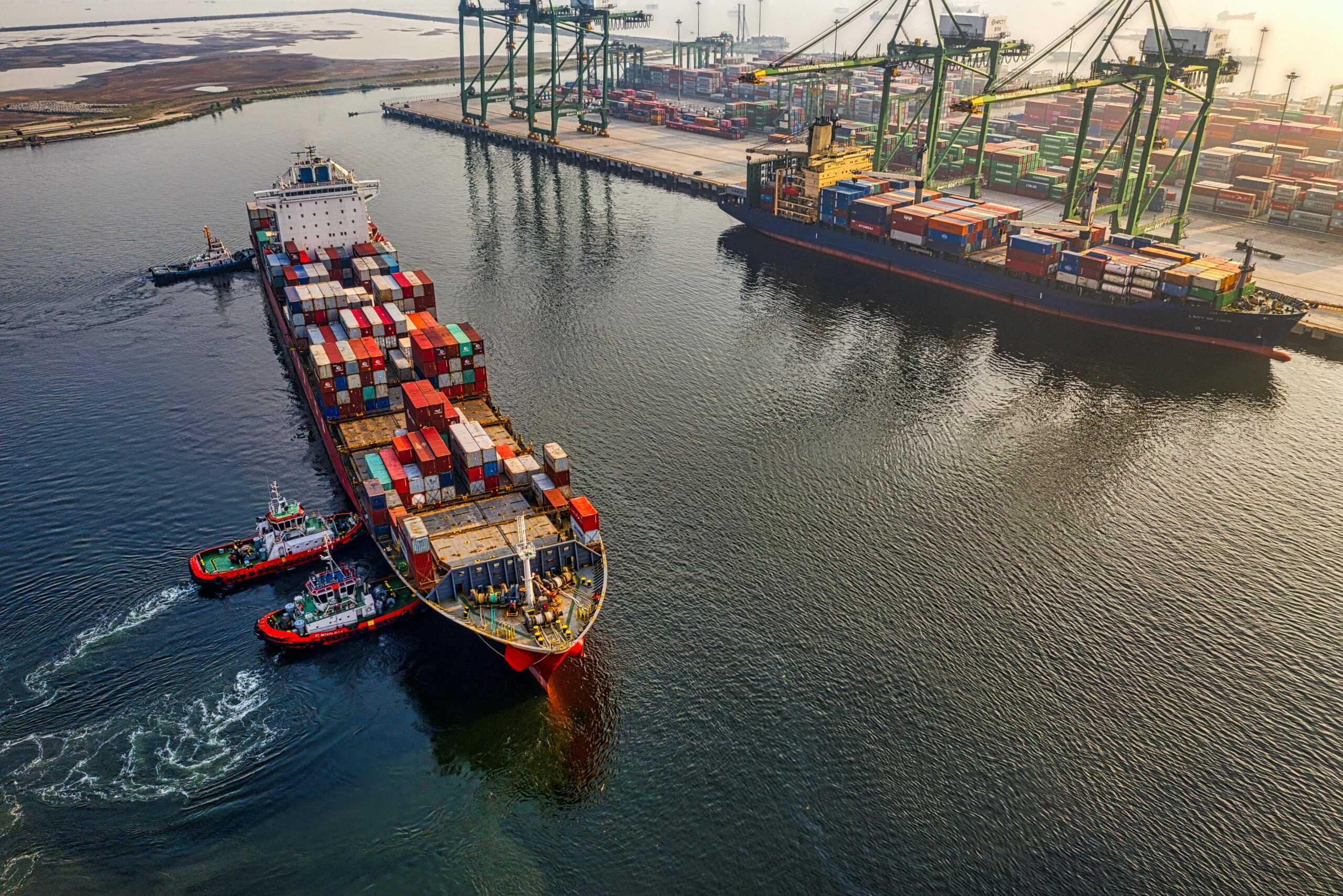Overview
In today’s global trade ecosystem, packaging is no longer just a protective layer for products—it’s a statement of values, responsibility, and long-term sustainability. For exporters, especially in the agricultural and food industry, the shift toward eco-friendly packaging is not just a passing trend. It’s becoming a non-negotiable requirement for global buyers who care about environmental impact, brand image, and regulatory compliance.
As a company like Exportloom, dealing with dehydrated vegetable powders such as garlic powder, onion powder, ginger powder, and herbal powders like moringa and amla, packaging plays a central role. It ensures that products travel thousands of miles while retaining freshness, aroma, and quality. But beyond protection, buyers now expect packaging that aligns with their eco-conscious values.
This blog explores why eco-friendly packaging matters in exports, the advantages it brings to buyers and exporters, and how businesses can adopt it strategically to gain a competitive edge.
🌍 1. Changing Global Buyer Preferences
Today’s international buyers—from distributors and wholesalers to retail brands—are under constant pressure from consumers and regulators to adopt sustainable practices.
- Consumer Pressure: In the U.S. and Europe, 60–70% of shoppers prefer products with eco-friendly packaging. They’re willing to pay a premium for products that align with their sustainability values.
- Retailer Standards: Large retailers like Walmart, Carrefour, and Tesco demand suppliers follow strict sustainability benchmarks, including packaging.
- Government Regulations: The European Union’s Single-Use Plastics Directive and increasing bans on non-recyclable plastics worldwide push importers to source from exporters who meet eco-packaging standards.
👉 For exporters, offering eco-friendly packaging is no longer optional—it’s the difference between winning contracts and being left behind.
📦 2. What Is Eco-Friendly Packaging in Exports?
Eco-friendly packaging refers to materials and designs that reduce environmental impact while maintaining product safety and integrity during transit. For agricultural exports, it means:
- Biodegradable Materials: Jute, kraft paper, biodegradable plastics.
- Recyclable Options: HDPE with recyclable liners, paper-based sacks.
- Reduced Carbon Footprint: Lightweight materials that cut freight emissions.
- Reusable Packaging: Multi-use bulk containers for B2B buyers.
In the case of Exportloom, packaging such as 100 kg jute sacks for bulk spice powders or moisture-proof kraft paper pouches for retail buyers ticks all the boxes—eco-friendly yet durable.
🛡️ 3. Why Global Buyers Value Eco-Friendly Packaging
3.1 Compliance and Market Access
- Buyers importing into the EU or North America must comply with sustainability laws. Eco-packaging ensures smooth customs clearance and avoids penalties.
3.2 Brand Image and Customer Trust
- Eco-packaging helps importers and retailers showcase themselves as responsible businesses. This is crucial in competitive markets where differentiation matters.
3.3 Reduced Waste Management Costs
- Non-recyclable packaging increases waste disposal costs for buyers. Eco-packaging minimizes these expenses and simplifies logistics.
3.4 Longer Shelf Life & Product Protection
- Advanced biodegradable laminates and liners protect powders like garlic and ginger from moisture and oxygen, ensuring 12–18 months of shelf life.
3.5 Premium Pricing Advantage
- Products in eco-packaging command 10–20% higher retail prices, giving buyers better margins.
🔑 4. Exporter Benefits: Why You Should Switch
For exporters like Exportloom, eco-friendly packaging isn’t just a cost—it’s a business investment with multiple returns.
- Access to High-Value Buyers: Eco-packaging opens doors to retailers, premium distributors, and organic/natural product chains.
- Better Negotiating Power: Exporters can justify slightly higher prices when offering sustainable solutions.
- Reduced Risk of Shipment Rejection: Non-compliant packaging can lead to customs delays or outright rejection.
- Future-Proof Business: With global sustainability rules tightening, eco-packaging safeguards long-term export viability.
- Positive Brand Perception: Exportloom isn’t just exporting powders—it’s exporting responsibility.
⚙️ 5. Practical Eco-Friendly Packaging Solutions for Dehydrated Powders
5.1 Bulk Packaging (B2B)
- 25–100 kg Jute Sacks: Biodegradable, breathable, and cost-effective.
- Laminated Paper Bags with Inner Liners: Provide moisture resistance for garlic/onion powders.
- Recyclable HDPE Bags: Strong, safe, and globally accepted.
5.2 Retail/Private Label Packaging (B2C)
- Kraft Paper Pouches with Biodegradable Lamination: Popular in health-conscious markets.
- Compostable Zip-Lock Bags: Ideal for organic and herbal powders like moringa or amla.
- Glass Jars with Recyclable Labels: Premium packaging for high-end buyers.
5.3 Innovations on the Horizon
- Edible Films: Research is ongoing into films made from starches and proteins.
- Plant-Based Plastics (PLA): Compostable plastics that mimic traditional packaging but are eco-safe.
📊 6. Quantifiable Impact
Let’s put numbers into perspective:
- Switching from plastic to jute in a 100 kg shipment reduces carbon footprint by 30–40%.
- Buyers using eco-packaged products see 15–20% faster acceptance in retail chains.
- Exporters offering eco-friendly options report 20–25% higher repeat orders from eco-conscious buyers.
For Exportloom, adopting eco-packaging means aligning with global trends while giving buyers a clear, quantifiable advantage.
🌐 7. Case Example: Eco-Packaging for Garlic Powder
Imagine an importer in Germany sourcing garlic powder. Two suppliers quote similar prices. Supplier A uses plastic packaging, Supplier B (Exportloom) uses biodegradable jute sacks with moisture-proof liners.
- The German buyer instantly prefers Supplier B. Why?
- Compliance with EU’s sustainability regulations ✅
- Lower waste disposal cost ✅
- Stronger eco-brand positioning in retail ✅
This small packaging choice secures Exportloom the contract, while Supplier A loses out.
💡 8. How Exporters Can Transition Smoothly
- Start Small: Offer eco-packaging as an optional upgrade for buyers.
- Highlight Benefits: Showcase sustainability data in catalogs and proposals.
- Get Certified: Eco-certifications (FSC, compostable material logos) add buyer confidence.
- Partner with Suppliers: Work with packaging vendors specializing in biodegradable solutions.
- Educate Buyers: Provide details on shelf life, durability, and eco advantages in product sheets.
🚀 9. The Future of Export Packaging
Global trade is moving toward a green economy, where packaging is as important as product quality. Within the next 5–10 years:
- Plastic bans will intensify, making eco-packaging a baseline requirement.
- Buyers will demand traceability, asking where packaging materials come from.
- Sustainable logistics (lightweight, low-carbon packaging) will dominate.
Exporters who adapt now—like Exportloom—will have a first-mover advantage.
✅ 10. Conclusion
Eco-friendly packaging is no longer an optional extra in exports—it’s a necessity. For global buyers, it means compliance, trust, and better margins. For exporters, it translates into new opportunities, reduced risks, and long-term sustainability.
At Exportloom, we understand that the packaging we choose reflects not just our product quality, but our commitment to a greener planet. By adopting eco-friendly solutions—whether jute sacks for bulk garlic powder or biodegradable pouches for organic moringa—we align ourselves with what truly matters to our global partners.



